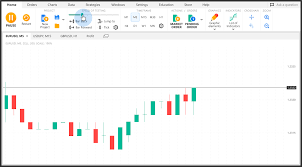
Economic bubbles are created when the value of an asset or a product rises dramatically above its basic value. These can be a result of a number of factors including a change to investor behavior, or a technological innovation.
Economic bubbles are often identified "after they have occurred." Changes in market conditions are the primary cause of economic bubbles, though there have been many other factors. Some of these factors include ultra-easy currency policy and very low interest rates.
To understand how bubbles are formed, economists developed a series of guidelines to help them determine whether an investment is a 'bubble. These guidelines may help investors avoid buying assets that might be a speculative bubble.
The first step in determining whether or not an investment is a bubble is to determine how much it has risen over time. The information is found by examining the financial records of the business and its previous performance.

Dividends are another way to assess the value of an asset. This can indicate how stable the business model of the company is, and whether or not an asset's value will continue rising in the future.
Stock bubbles
Stocks represent a large amount of wealth and are an essential part of any portfolio. When a share becomes overvalued, investing in it can be risky. To avoid investing in a dangerous asset, it's important to closely monitor the performance of companies and look for early signs of a stock bubble.
The dot-com bubble of the 1990s is a well-known example of a stock bubble. The dot-com bubble of the 1990s was fuelled primarily by the availability of cheap money as well as new technologies.
There have been several other major stock bubbles in history, including the South Sea Bubble and the Dutch Tulip Mania of the 1600s. These bubbles both involved investing in commodities that were wildly overpriced. This led to massive losses for investors.
Stock bubbles involve the purchase of shares in an organization in hopes of increasing their value. This is done by way of an initial publicly offered, or IPO.

Speculative stock investors are often the ones who drive up the stock price in a typical stock market bubble. They want to take advantage of the higher value of shares. These speculators are not necessarily rational; they often act without consideration for their own financial health or the long-term health of the company.
Stock bubbles have the potential to be one of most devastating economic bubbles. A stock bubble can cause economic damage or even lead to the loss of jobs. You should be able to recognize a bubble when it appears so that you make an informed investment decision.
FAQ
Are bonds tradable?
Yes, they are. As shares, bonds can also be traded on exchanges. They have been for many, many years.
The only difference is that you can not buy a bond directly at an issuer. They must be purchased through a broker.
It is much easier to buy bonds because there are no intermediaries. You will need to find someone to purchase your bond if you wish to sell it.
There are many different types of bonds. Some bonds pay interest at regular intervals and others do not.
Some pay quarterly interest, while others pay annual interest. These differences make it possible to compare bonds.
Bonds are great for investing. You would get 0.75% interest annually if you invested PS10,000 in savings. You would earn 12.5% per annum if you put the same amount into a 10-year government bond.
You could get a higher return if you invested all these investments in a portfolio.
What is a bond?
A bond agreement between two people where money is transferred to purchase goods or services. Also known as a contract, it is also called a bond agreement.
A bond is normally written on paper and signed by both the parties. This document details the date, amount owed, interest rates, and other pertinent information.
When there are risks involved, like a company going bankrupt or a person breaking a promise, the bond is used.
Bonds are often combined with other types, such as mortgages. This means that the borrower must pay back the loan plus any interest payments.
Bonds are also used to raise money for big projects like building roads, bridges, and hospitals.
The bond matures and becomes due. The bond owner is entitled to the principal plus any interest.
If a bond does not get paid back, then the lender loses its money.
How can I select a reliable investment company?
A good investment manager will offer competitive fees, top-quality management and a diverse portfolio. Commonly, fees are charged depending on the security that you hold in your account. Some companies charge no fees for holding cash and others charge a flat fee per year regardless of the amount you deposit. Others charge a percentage based on your total assets.
It is also important to find out their performance history. If a company has a poor track record, it may not be the right fit for your needs. Avoid companies that have low net asset valuation (NAV) or high volatility NAVs.
Finally, it is important to review their investment philosophy. To achieve higher returns, an investment firm should be willing and able to take risks. If they're unwilling to take these risks, they might not be capable of meeting your expectations.
What is an REIT?
An REIT (real estate investment trust) is an entity that has income-producing properties, such as apartments, shopping centers, office building, hotels, and industrial parks. These companies are publicly traded and pay dividends to shareholders, instead of paying corporate tax.
They are similar in nature to corporations except that they do not own any goods but property.
Statistics
- For instance, an individual or entity that owns 100,000 shares of a company with one million outstanding shares would have a 10% ownership stake. (investopedia.com)
- Individuals with very limited financial experience are either terrified by horror stories of average investors losing 50% of their portfolio value or are beguiled by "hot tips" that bear the promise of huge rewards but seldom pay off. (investopedia.com)
- US resident who opens a new IBKR Pro individual or joint account receives a 0.25% rate reduction on margin loans. (nerdwallet.com)
- "If all of your money's in one stock, you could potentially lose 50% of it overnight," Moore says. (nerdwallet.com)
External Links
How To
How to open a trading account
To open a brokerage bank account, the first step is to register. There are many brokers that provide different services. There are many brokers that charge fees and others that don't. Etrade, TD Ameritrade and Schwab are the most popular brokerages. Scottrade, Interactive Brokers, and Fidelity are also very popular.
Once your account has been opened, you will need to choose which type of account to open. You can choose from these options:
-
Individual Retirement Accounts (IRAs).
-
Roth Individual Retirement Accounts
-
401(k)s
-
403(b)s
-
SIMPLE IRAs
-
SEP IRAs
-
SIMPLE SIMPLE401(k)s
Each option offers different benefits. IRA accounts provide tax advantages, however they are more complex than other options. Roth IRAs allow investors deductions from their taxable income. However, they can't be used to withdraw funds. SIMPLE IRAs are similar to SEP IRAs except that they can be funded with matching funds from employers. SIMPLE IRAs are very simple and easy to set up. They allow employees to contribute pre-tax dollars and receive matching contributions from employers.
Next, decide how much money to invest. This is also known as your first deposit. Most brokers will offer you a range deposit options based on your return expectations. A range of deposits could be offered, for example, $5,000-$10,000, depending on your rate of return. This range includes a conservative approach and a risky one.
You must decide what type of account to open. Next, you must decide how much money you wish to invest. You must invest a minimum amount with each broker. These minimums can differ between brokers so it is important to confirm with each one.
Once you have decided on the type of account you would like and how much money you wish to invest, it is time to choose a broker. You should look at the following factors before selecting a broker:
-
Fees-Ensure that fees are transparent and reasonable. Many brokers will offer rebates or free trades as a way to hide their fees. However, some brokers raise their fees after you place your first order. Don't fall for brokers that try to make you pay more fees.
-
Customer service – You want customer service representatives who know their products well and can quickly answer your questions.
-
Security – Choose a broker offering security features like multisignature technology and 2-factor authentication.
-
Mobile apps - Check if the broker offers mobile apps that let you access your portfolio anywhere via your smartphone.
-
Social media presence: Find out if the broker has a social media presence. If they don’t have one, it could be time to move.
-
Technology - Does it use cutting-edge technology Is the trading platform simple to use? Are there any issues with the system?
Once you have decided on a broker, it is time to open an account. Some brokers offer free trials. Other brokers charge a small fee for you to get started. Once you sign up, confirm your email address, telephone number, and password. Next, you will be asked for personal information like your name, birth date, and social security number. Finally, you'll have to verify your identity by providing proof of identification.
Once you're verified, you'll begin receiving emails from your new brokerage firm. These emails will contain important information about the account. It is crucial that you read them carefully. The emails will tell you which assets you are allowed to buy or sell, the types and associated fees. Also, keep track of any special promotions that your broker sends out. These could be referral bonuses, contests or even free trades.
Next is opening an online account. Opening an account online is normally done via a third-party website, such as TradeStation. Both of these websites are great for beginners. When you open an account, you will usually need to provide your full address, telephone number, email address, as well as other information. After you submit this information, you will receive an activation code. You can use this code to log on to your account, and complete the process.
Now that you've opened an account, you can start investing!